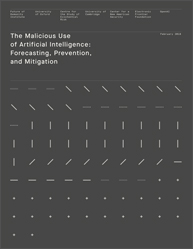BY Richard Summerfield
Though cyber security is one of the biggest issues of our time, a misalignment between CEOs and technical officers, including CIOs, CTOs and CISOs, is weakening many organisations’ cyber security postures, according to a new report from Centrify titled ‘CEO Disconnect is Weakening Cybersecurity’.
The report, which saw over 800 executives surveyed by Centrify and Dow Jones Customer Intelligence, suggests that discord among C-suite leaders is leaving companies increasingly vulnerable to attack. The report claims that “the CEO response to cybersecurity is misaligned with reality”.
Sixty-two percent of CEOs cite malware as the primary threat to cyber security, compared to only 35 percent of technical officers. Only 8 percent of all executives stated that anti-malware endpoint security would have prevented the “significant breaches with serious consequences” that they experienced. Technical officers believe that identity breaches – including privileged user identity attacks and default, stolen or weak passwords – are the largest threat companies face, not malware.
Poor investment decisions made by CEOs – 60 percent of CEOs are investing the most in malware prevention and 93 percent indicate they already feel ‘well-prepared’ for malware risk – and poor communication between CEOs and technical officers are further cause for concern. Eighty-one percent of CEOs believe that they are most accountable for their company’s cyber security strategy, while just 16 percent of technical officers agree. Seventy-eight percent of technical officers believe that they are most accountable for the company’s strategy.
“While the vast majority of CEOs view themselves as the primary owners of their cybersecurity strategies, this report makes a strong argument that companies need to listen more closely to their Technical Officers,” said Tom Kemp, chief executive of Centrify. "It’s clear that the status quo isn’t working. Business leaders need to rethink security with a Zero Trust Security approach that verifies every user, validates their devices, and limits access and privilege.”
To bridge the gap between CEOs and technical officers, the report suggests that all parties must share their perspectives on the issues surrounding cyber security, but ultimately CEOs must alter their understanding of the threats they face. While malware is an issue, CEOs must change their mindsets, realign their cyber security spending and focus more heavily on the importance on combating identity breaches.



